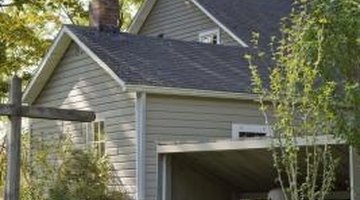How to Hook a Mobile Home to a Household Propane System
Liquefied propane (LP) gas is a fuel alternative to natural gas. It is widely used in rural areas where there is no access to the nation's underground network of high-pressure natural gas distribution lines. The advantage of using LP is that tanks can be installed and recharged just about anywhere. As long as local building codes are followed closely, installation of LP appliances is just as safe as natural gas. It is important to note that natural gas appliances should not be run with propane --- an expensive, and often impossible, conversion to ensure safe operation would be required.

-
Contact a LP professional contractor to install the tank and a regulator. Ask that the tank be installed according to local building codes --- the contractor should be familiar with these codes or be willing to learn what those codes are.
-
Measure the distance from the inside of the tank pressure regulator to a point under the mobile home that would be convenient for a junction distribution to appliances at various points throughout the mobile home.
-
Purchase a black steel pipe from your local do-it-yourself store that closely matches the length described by the measurement taken in Step 2. If no single piece exists, several different lengths can often be added together to achieve the desired length.
-
Dig a trench from the regulator to the mobile home's foundation or the line at the edge of the home's exterior wall. Continue digging the trench under the mobile home to the point identified in Step 2.
-
Dry fit the pieces of black steel pipe that will connect the regulator to the point under the mobile home. Unscrew the fittings and wrap the threaded ends of the pipe twice around with yellow polytetrafluoroethylene (PTFE) tape. Reconnect the pipes to the couplings and tighten them with the monkey wrench until all of the joints are secure.
-
Determine the number of appliances that will be attached to the LP gas line and purchase a junction with this number of outputs. If desired, a junction with extra outputs can be purchased and capped off for future expansion of the LP system.
-
Wrap the threaded end of the pipe extending from the regulator twice around with the yellow PTFE tape and screw the junction onto the end of the threaded pipe. Continue tightening with the monkey wrench until the junction is secure.
-
Measure lengths from the junction to the various points where the LP appliances will be located. Corners can be achieved by turning 45-degree or 90-degree elbows onto the end of a pipe.
-
Continue wrapping the threaded ends of the black steel pipe with yellow PTFE tape and running pipe under the mobile home to the various points below the mobile home's various LP appliances.
-
Tape the threaded ends and screw on a 90-degree elbow that will divert the LP gas up into the mobile home.
-
Drill a 1/2-inch hole in the mobile home's floor directly above the black steel pipe. Install another length of pipe that will connect and elevate the LP line from the 90-degree elbow below the mobile home to about 2 inches above the floor within the home. Repeat this step for all points where the LP gas appliances will be installed.
-
Wrap the end of the pipe inside the mobile home with the PTFE tape and screw on a valve, which can be shutoff in the event of maintenance or emergency.
References
Tips
- Propane technicians can perform low-cost inspections of completed systems to check for leaks.
Warnings
- Natural gas and liquefied propane operate at different pressures. As such, natural gas appliances cannot be run on LP gas without conversion kits. These kits will further restrict gas flow and alter the burner structure. Some appliances cannot be converted and must be replaced with LP appliances.
Writer Bio
Sam Smith has worked as a professional writer since 2005. His work appears in several publications including "Sauk Valley Newspapers," the Rochester "Post Bulletin" and the "Guardian" of Nassau, Bahamas. Smith received a Master of Science in journalism from the University of Illinois.
Photo Credits
- Jupiterimages/Creatas/Getty Images
More Articles



